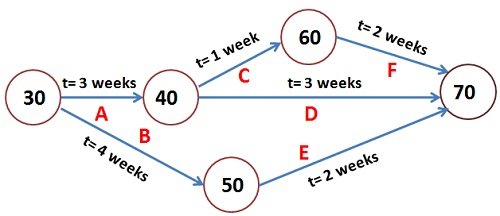PERT Estimation Technique Homework Help
PERT Estimation Technique
PERT (Program Evaluation and Review Technique) is one of the effective and demonstrated strategies among the numerous different methods, for example, CPM, Function Point Counting, Top-Down Estimating, WAVE, and so forth.
PERT was at first made by the US Navy in the late 1950s. The pilot task was for creating Ballistic Missiles and there have been a huge number of contractual workers included.

After PERT approach was utilized for this undertaking, it really finished two years in front of its underlying calendar.
The PERT Basics
At the center, PERT is about administration probabilities. Subsequently, PERT includes in numerous straightforward measurable strategies too.
Some of the time, individuals classify and set up PERT and CPM together. In spite of the fact that CPM (Critical Path Method) shares a few attributes with PERT, PERT has an alternate core interest.
Same as the vast majority of other estimation systems, PERT likewise separates the assignments into itemized exercises.
At that point, a Gantt diagram will be readied outlining the interdependencies among the exercises. At that point, a system of exercises and their interdependencies are attracted an illustrative way.
In this guide, a hub speaks to every occasion. The exercises are spoken to as bolts and they are attracted starting with one occasion then onto the next, in light of the succession.
Next, the Earliest Time (TE) and the Latest Time (TL) are figured for every action and distinguish the slack time for every action.
With regards to inferring the appraisals, the PERT model takes a measurable course to do that. We will cover more on this in the following two areas.
Following is a model PERT diagram:
PERT Chart
The Three Chances
There are three estimation times associated with PERT; Optimistic Time Estimate (TOPT), Most Likely Time Estimate (TLIKELY), and Pessimistic Time Estimate (TPESS).
In PERT, these three gauge times are inferred for every action. Thusly, a scope of time is given for every action with the most plausible worth, TLIKELY.
Following are further subtleties on each gauge:
1. TOPT
This is the quickest time a movement can be finished. For this, the supposition that is made that all the essential assets are accessible and all forerunner exercises are finished as arranged.
2. TLIKELY
The greater part of the occasions, venture supervisors are approached distinctly to submit one gauge. All things considered; this is the gauge that goes to the upper administration.
3. TPESS
This is the most extreme time required to finish an action. For this situation, it is accepted that numerous things turn out badly identified with the movement. A great deal of improve and asset inaccessibility are expected when this estimation is inferred.
The PERT Mathematics
BETA likelihood appropriation is the thing that works behind PERT. The normal finishing time (E) is determined as underneath:
E = (TOPT + 4 x TLIEKLY + TPESS)/6
In the meantime, the conceivable difference (V) of the gauge is determined as underneath:
V = (TPESS - TOPT)^2/6^2
Presently, following is the procedure we pursue with the two qualities:
For each movement in the basic way, E and V are determined.
At that point, the aggregate of all Es is taken. This is the generally expected finish time for the undertaking.
Presently, the comparing V is added to every action of the basic way. This is the difference for the whole undertaking. This is done distinctly for the exercises in the basic way as just the basic way exercises can quicken or postpone the venture term.
At that point, standard deviation of the venture is determined. This equivalents to the square base of the fluctuation (V). Presently, the ordinary likelihood conveyance is utilized for computing the task finish time with the ideal likelihood.
Project Management Tutorials
- Activity Based Costing
- Basic Quality Tools
- Benchmarking Process
- Cause and Effect Diagram
- Project Activity Diagram
- Project Charter
- Project Contract Types
- Project Cost Control
- Gantt Chart Tool
- PERT Estimation Technique
- Work Breakdown Structure
- Motivational Theories
- Project Kick-off Meeting
- Conflict Management
- Crisis Management
- Critical Chain Project Management
- Decision Making Process
- Monte Carlo Analysis
- Negotiation Skills
- Pareto Chart Tool
- Project Management Processes
- Project Manager Goals
- Project Portfolio Management
- Project Quality Plan
- Project Scope
- Project Management Software
- Project Time Management
- Capability Maturity Model (CMM)
- Critical Chain Project Management (CCPM)
- Critical Path Method (CPM)
- Earned Value Management (EVM)
- Enterprise modeling
- Event chain diagram
- Five Forces Analysis
- Graphical Evaluation and Review Technique (GERT)
- Inclusive Management
- Product Life Cycle
- Run chart
- Six Sigma
- Aggregate planning
- Budgeted Cost of Work Performed
- Business analysis
- Business Process Modeling (BPM)
- Event Chain Diagrams
- Gantt chart
- Henry Gantt
Project Management Case studies
- Project Management Methodologies
- Implementation of Project Management
- Project Management Cultures
- Project Management Organizational Structures
- Negotiating for resources In Project Management
- Project Management Estimating
- Project Management Planning
- Project Scheduling
- Project Execution
- Controlling Projects Case Study
- Project Risk Management
- Conflict management Case Study
- Morality and Ethics Case Study
- Managing Scope Changes Case Study
- Wage and Salary Administration
- Time Management Case Study
- Industry Specific Construction Case Study
Project Management Sample Assignments
Project Management Sample Solutions
Testimonials
Very affordable projects!! And that to submit before deadlines. Thanks for helping me in my database project and raising my grades. I have been able to secure good marks in my internal assessment only because of you. Read More

